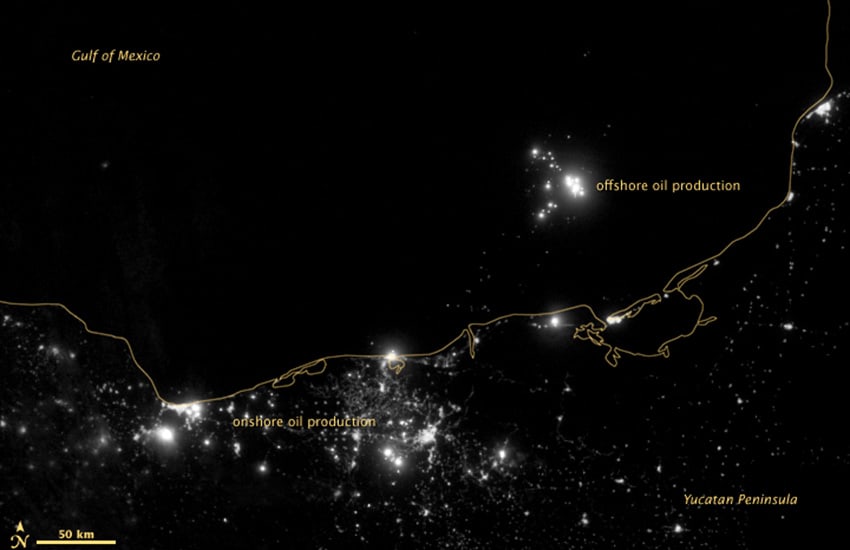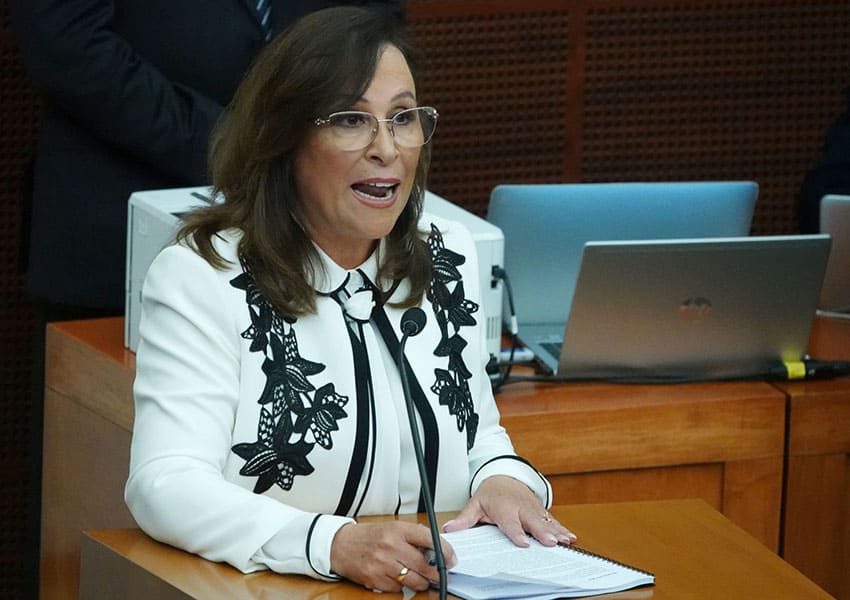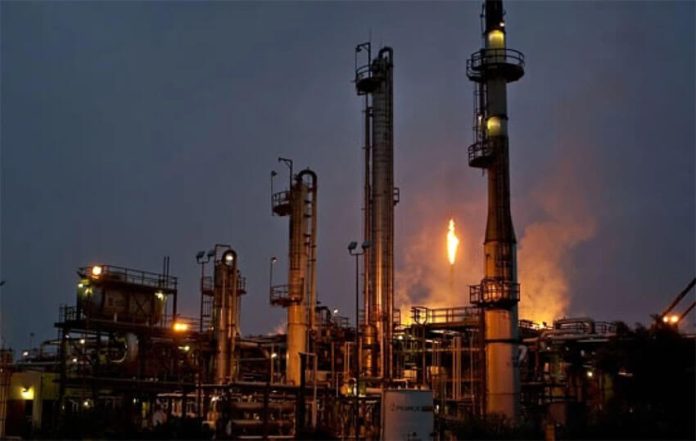Mexican state oil company Pemex illegally burnt off hydrocarbon resources at two of its most important new fields in the three years up to August 2022, Reuters reported.
Three internal documents from the National Hydrocarbons Commission (CNH) dating from August, revealed how Pemex destroyed gas and condensate resources worth US $275 million from the Ixachi field in Veracruz and $67 million from the Quesqui field in Tabasco. Combined, the amount of destroyed resources from both fields adds up to $342 million.
The National Hydrocarbons Commission is the country’s oil and gas regulator.

The resources come as a natural byproduct of oil production. The report said Pemex has been burning off (flaring) much of the gas and condensate produced rather than capture it and make use of it.
Back in February 2022, Reuters exposed Pemex’s practice of gas flaring, a common industry method. However, it was not until Reuters obtained a copy of the CNH report that the precise amount and value of the destroyed hydrocarbons was known.
According to Reuters, Mexico is the world’s eight-biggest gas flarer.
The practice is cheaper than the investment in equipment to capture the gas and process it and the cost of transporting it, the report says. However, flaring is not only a waste of monetizable resources, it’s also widely regarded as detrimental to the environment.
According to a Reuters-organized study, Pemex’s flaring practice has dramatically increased under Mexican President Andrés Manuel López Obrador. It has led to the company facing repeated CNH fines for violating its own promises regarding the development of infrastructure and equipment at the Ixachi and Quesqui fields. In August, Pemex was fined over US $2 million for violations of its development plan for Ixachi, Reuters reported.
According to the newspaper Expansión, Ixachi — a gas-producing field that opened a year ago and that is one of Pemex’s flagship projects — has prioritized the production of crude oil rather than using its natural gas deposits, apparently in part to satisfy the López Obrador administration’s desire to boost oil production and make Mexico oil self-sufficient.

However, a contract with the Malaysian company Coastal Contracts Bhd, which provides gas conditioning services, has allowed Ixachi to increase its output from 150 million standard cubic feet per day (mmscfd) to 180 mmscfd since November 2021 according to industry publication The Edge Markets. In January, Pemex increased its payment rate to Coastal Contracts as an incentive reward for expanding Ixachi’s capacities.
But natural gas production at Ixachi also presents technical challenges, industry expert Pablo Medina of Welligence Energy Analytics told the online industry publication Natural Gas Intelligence, including its “extreme” depths (3.7 to 4.3 miles) and high pressure.
One senior Pemex official told Reuters that the fines for not living up to its development plans for Ixachi were worth it to the company because they were “small” and the company needed to speed up crude oil output to meet López Obrador’s ambitious production goals.
Early after taking office, López Obrador said that Ixachi and Quesqui formed part of 17 new priority fields expected to dramatically boost national production as part of a plan to make the country energy independent. Moreover, during a visit to Ixachi in 2019, López Obrador expressed the urgency of boosting oil production.
“If we hadn’t intervened in time, falling oil production would have put us in a situation of a lot of risk: it would lead — possibly — to a severe economic and financial crisis,” he said at the time.
Both fields were supposed to receive more financial resources to speed-up exploration and production, but Pemex failed to complete the pipelines, wells and other infrastructure needed to produce gas and condensate without high levels of waste. And so it is burning what it does not have the equipment to deal with, the report says.

The information, which was sent to Energy Minister Rocio Nahle, show that in Quesqui, the value of burned-off condensate was almost US $8 million in two years, while in Ixachi, it was more than US $21 million in three years. In Ixachi, 62.9 billion cubic feet of gas was destroyed, or nearly one-third of the amount of gas produced in the field, Reuters said.
“The objective should be to maximize making use of all hydrocarbon products in the field,” the CNH report said, adding that Pemex “does not meet production it committed to because wells and infrastructure are not in place.”
For years, Pemex – the world’s most indebted oil company —has refused to invest in infrastructure for gas exploration and production, arguing it is too expensive. Instead, the country imports high volumes from the United States. However, rather than delaying extraction work in order to fix underlying problems, Pemex has risked fines and caused environmental damage, two company sources told Reuters.
One of the sources also said they had witnessed senior Pemex executives in four meetings early in 2023, agreeing that the company would prefer to pay the fines than make changes. In 2022 alone, Pemex faced four fines by the CNH, which it is currently appealing. The two most recent fines could each reach $6.2 million, a third source at the CNH told Reuters.
While relatively small for a company that had revenues of more than US $87 billion between January and September 2022, both would be the highest individual fines ever imposed by the CNH.
Lately, Pemex has come under pressure due to the environmental damage associated with burning off gas. Officials have acknowledged that Pemex’s environmental, social and governance record threaten its financing.
In its updated business plan for 2023–2027, the state-owned company acknowledged that it has been falling behind in a global race to transition to renewable energy sources.
Pemex did not respond to repeated requests for comment and both the CNH and López Obrador’s office declined to comment on this matter, Reuters said.
With reports from Reuters
